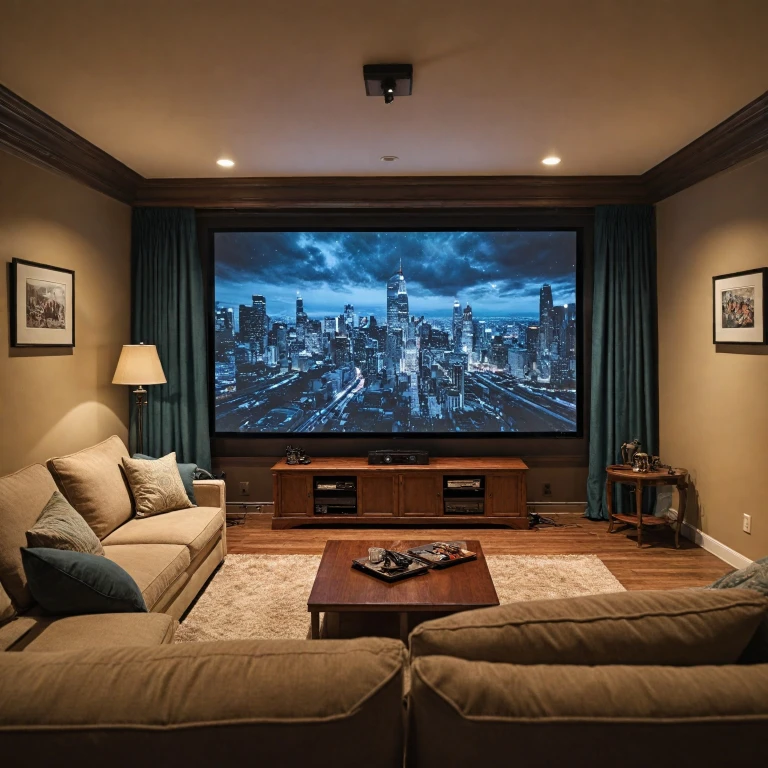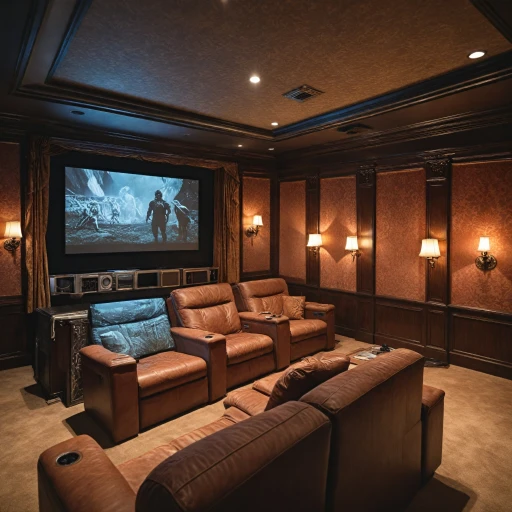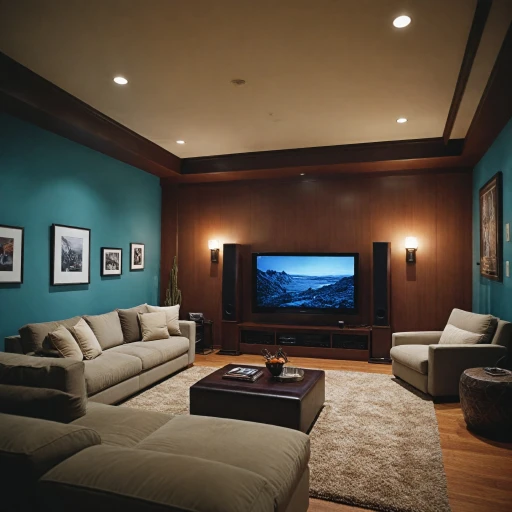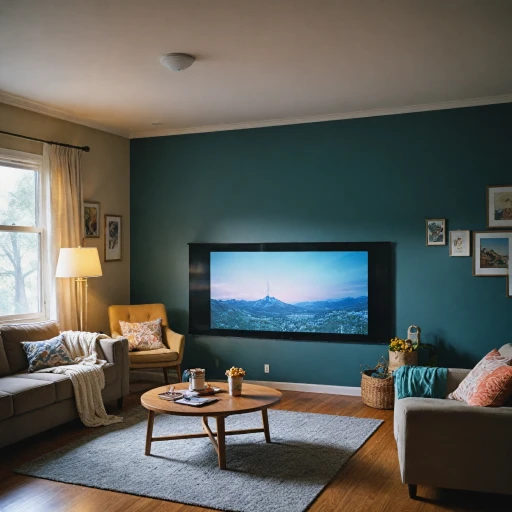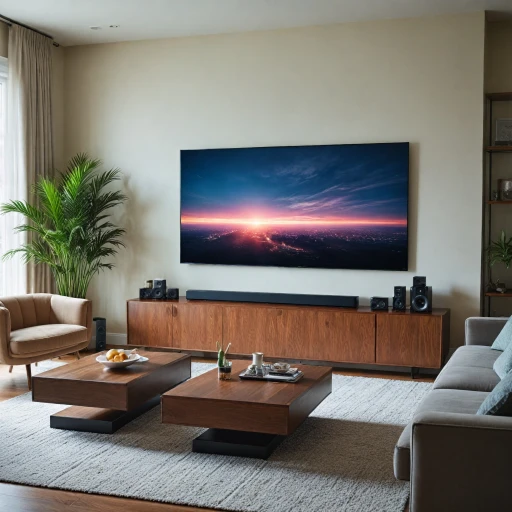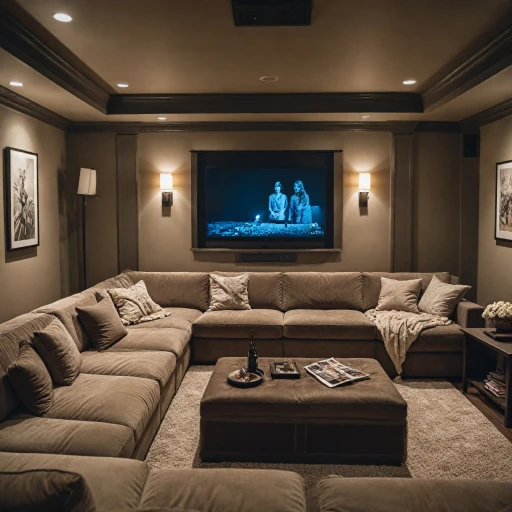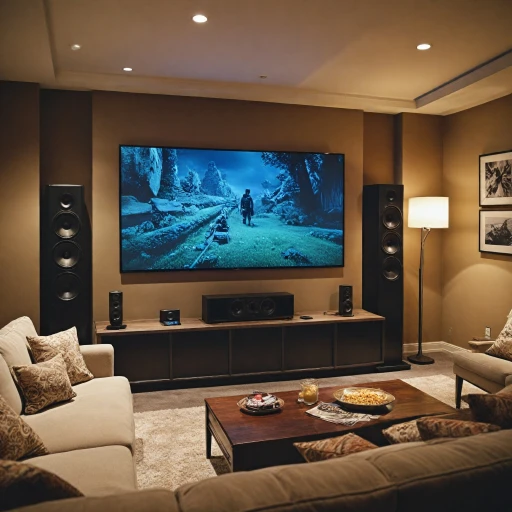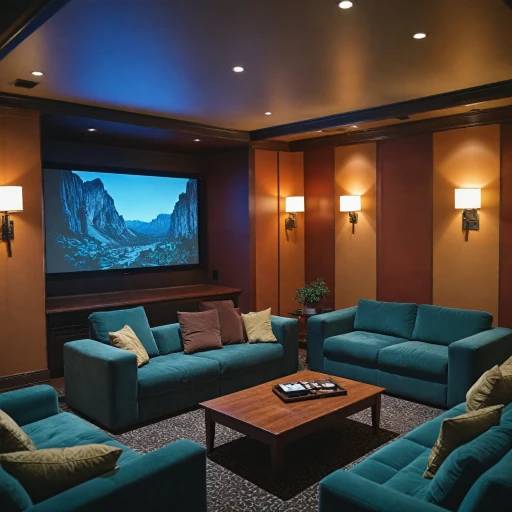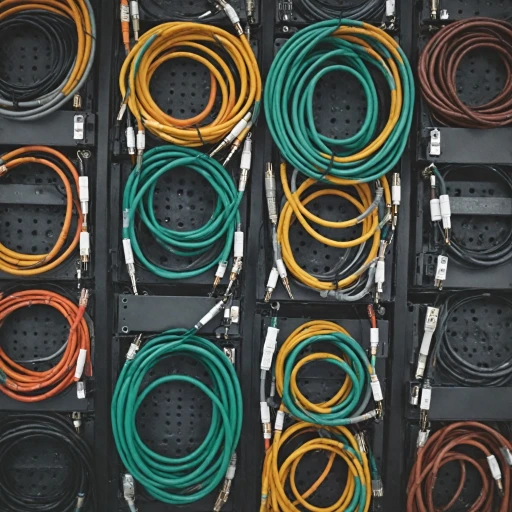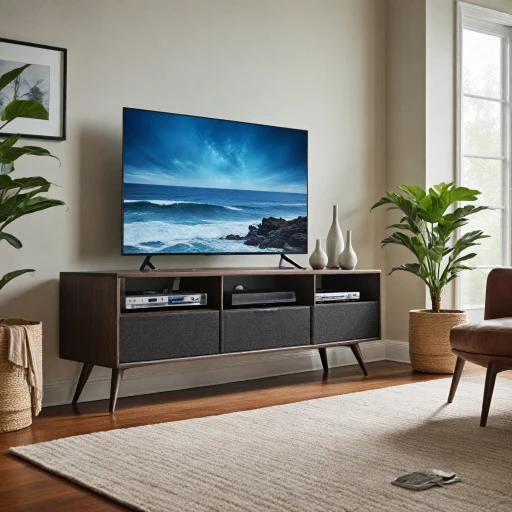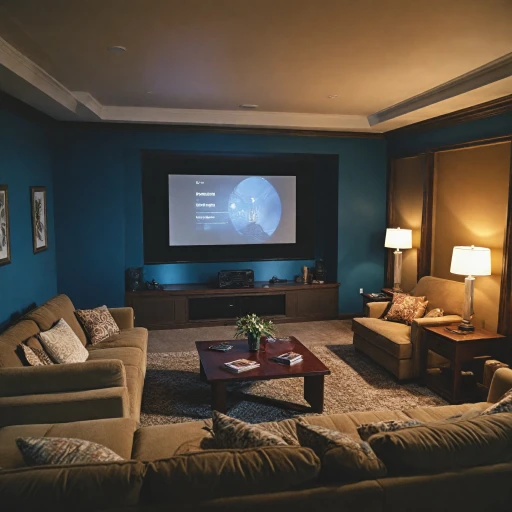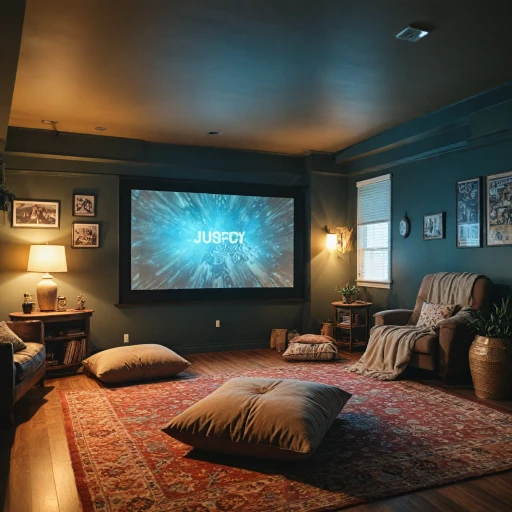
Understanding Pull-Down Projector Screens
Exploring Pull-Down Projector Screens for Optimal Viewing
When setting up a home theater, the choice of screen can make a significant difference in your viewing quality. Pull-down projector screens are a versatile option, offering several conveniences which can enhance your home cinema experience. The pull-down design is particularly advantageous for those who seek flexibility and portability. These screens can easily roll up into a casing, freeing up wall space when not in use. This feature is ideal for multipurpose rooms where the screen might occasionally be an obstruction. Manual pull-down screens are generally more affordable than electric alternatives, making them an attractive option for budget-conscious enthusiasts. Their price does not compromise their utility, as many users find manual screens to provide excellent value and quality for the money. Another advantage of using a pull-down screen is its adaptability with various projection types, including ultra short throw and standard projectors. They can be mounted on walls or ceilings, depending on what suits your space best, offering versatile installation options for any room layout. Moreover, they come in different materials, such as matte white, which helps in optimizing viewing even in rooms with ambient light. The choice of material, as you will see in the other parts of this article, can affect your screen's performance and viewing angle. When considering a projector setup, it's also important to explore other types of projector screens to understand which might suit your needs best. From fixed frame to portable options, the diversity of screens available ensures there's something for every setup preference. For those undecided on screen types, exploring premium brands like Elite Screens can provide insights into various features and quality aspects. For more on choosing the perfect screen for your home theater, you might explore additional resources that provide deeper insights into various screen types, their impact on viewing experience, and expert guidance on selecting the ideal outdoor or indoor screen setup. This can empower you to make informed decisions that enhance your overall cinematic experience.Benefits of Using a Pull-Down Screen
Advantages of a Pull-Down Screen for Your Home Theater
Investing in a pull-down projector screen can significantly enhance your home theater setup, providing a superior viewing experience that television screens often can't match. Pull-down screens are particularly notable for their versatility and quality, making them a popular choice among home theater enthusiasts.
- Space-Saving Design: One of the main benefits of a pull-down screen is its ability to save space. Since these screens can be easily retracted when not in use, they don't occupy permanent wall or floor space. A simple manual pull mechanism allows you to easily conceal the screen, preserving the aesthetics of your room.
- More Viewing Options: Pull-down screens often offer a more extensive range of options in terms of size and aspect ratio compared to fixed frame screens. This flexibility ensures that you can find a matte white or high gain screen that perfectly matches your projector's capabilities and your room's size.
- Cost-Effective Solution: Compared to fixed or portable screens with a stand, pull-down screens often come at a more economical price point while still retaining a high level of quality. This makes them a cost-effective solution for creating a premium viewing experience without breaking the bank.
- Enhanced Picture Quality: Thanks to advancements in projection screen technology, even a lightweight pull-down screen can offer excellent image quality. The best screens mitigate ambient light interference and provide optimal gain, ensuring vivid colors and crisp details with your chosen projection setup.
- Elite Viewing Features: Brands like Elite Screens offer manual series with advanced features such as different viewing angles and aspect ratios, making it easier to achieve a cinematic experience right in your home. These screens cater to both short throw and ultra-short throw projectors, providing flexibility for various home theater configurations.
For those seeking to elevate their home theater setup, exploring options with a pull-down screen can open up transformative enhancements to your projection experience without requiring a complete room overhaul.
Choosing the Right Material for Your Screen
Material Matters for Pull-Down Screens
When considering a pull-down projector screen, it's crucial to understand how the material can impact your viewing experience. The right screen material can significantly enhance the projection quality, ensuring vivid colors and sharp images. Here's a closer look at the most common materials you might encounter and how they affect your screen projector setup.
Firstly, matte white screens are highly favored for their versatility and affordability. These screens offer a wide viewing angle, making them ideal for larger viewing spaces where viewers are spread out. Matte white screens also perform well under controlled lighting conditions, providing excellent color accuracy and brightness.
If you expect to use your pull-down screen in a setting with more ambient light, you might consider a high-gain screen. These screens can enhance brightness, making them suitable for more challenging lighting environments. However, be mindful of the viewing angle, as a higher gain can lead to hotspots and reduced visibility from more extreme angles.
Another option is the grey or high-contrast screens, which are designed to improve contrast levels, offering darker blacks and richer colors. This can be particularly beneficial for those who frequently watch movies or play games with darker scenes.
For the best fit, consider the aspect ratio that matches your projector and viewing space. Most home theater projectors use a 16:9 aspect ratio, but if your projector uses a different ratio, ensure your screen accommodates this for optimal viewing.
Whether you’re delving into the latest blockbuster or showcasing a presentation at work, choosing the right material for your manual pull-down projector screen can make a world of difference. Pairing the correct material with your screen and projector type can significantly enhance your home theater experience, making every viewing a pleasure. If you're aiming to further enhance your home theater with a Bluetooth surround sound system, consider how sound quality can complement the visual experience.
Installation Tips for Pull-Down Screens
Setting Up Your Pull-Down Projector Screen
Installing a pull-down projector screen is a crucial step to ensure the best visual experience for your home theater. The correct installation not only enhances the projection quality but also increases the longevity of your screen. Here are a few tips to guide you through the installation process:- Location Matters: Decide whether you want to mount your screen on the wall or the ceiling. Wall installation is straightforward and ideal if you have free wall space, whereas ceiling installation is suitable for rooms with limited wall space.
- Get the Right Tools: Before starting, gather essential tools like a drill, screwdriver, level, and measuring tape. Ensure you have the brackets and screws that come with the pull-down screen.
- Measuring and Marking: Determine the screen’s position by considering the viewing angle and distance from the projector. A level and a measuring tape will help you mark the positions accurately to maintain the 16:9 or 4:3 aspect ratio common in most projector screens.
- Consider Ambient Light: Ensure the location chosen is free from excessive ambient light to avoid washout effects and preserve the screen's true gain and viewing quality.
- Secure the Brackets: Once marked, drill pilot holes and secure the brackets firmly into place. Double-check their placement for a solid hold, particularly if installing a larger or heavier model like those from elite screens.
- Mount the Screen: With help, attach the screen to the installed brackets. Ensure the screen is level and securely attached to avoid sagging, which could affect the projection image.
Maintenance and Care for Longevity
Ensuring Longevity with Proper Screen Maintenance
Proper care and maintenance are crucial in extending the lifespan and maintaining the quality of your pull-down projector screen. While these screens are generally easy to use and maintain, overlooking care details can gradually impact their performance and visual clarity. Here are some essential tips:- Regular Cleaning: Begin by gently dusting your projector screen with a microfiber cloth to remove any surface dirt. For a deeper clean, consider using a mild soap solution with water, applied sparingly with a soft cloth. Avoid using harsh chemicals, as these can damage the matte white surface beyond repair.
- Avoid Direct Sunlight: Continuous exposure to direct sunlight can fade the quality of the screen material. Place your pull-down screen in a location with controlled ambient light conditions to protect it from potential UV damage.
- Safe Storage Practices: When not in use, ensure that the screen is completely retracted into its casing. This protects the screen from dust accumulation and potential damage from accidental contact.
- Secure Installation: Over time, check the wall or ceiling brackets to ensure that they remain firmly anchored. A secure installation prevents unwanted movements and further ensures the screen's durability and performance over the years.
- Inspect for Wear and Tear: Regularly review your screen for signs of wear such as frayed edges or wrinkles that might develop with sustained use. Address small issues promptly to avoid larger repairs later.
Comparing Pull-Down Screens to Other Types
Comparing with Other Screen Options
When considering your options for a home theater, it's crucial to understand how pull-down projector screens stack up against other types of screens. Here, we provide a comparison to help guide your decision-making process.- Fixed Frame Screens: Unlike pull-down screens, fixed frame screens provide a more permanent solution, mounted in a rigid frame that holds the screen taut. While these offer excellent picture quality due to their tensioned surface, they require a dedicated wall space, making them less ideal for rooms with limited space or a need for repurposing spaces.
- Electric Projector Screens: These are a step up from pull-down screens, with the added convenience of motorized retraction. They offer similar benefits in terms of saving space, but come at a higher price point. Additionally, the electric feature eliminates the potential wear and tear from manual handling.
- Portable Screens: Best for mobility, portable screens offer the flexibility to move your home theater setup. However, they might compromise on picture quality and size stability due to their lightweight and less rigid design.
